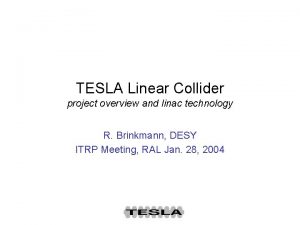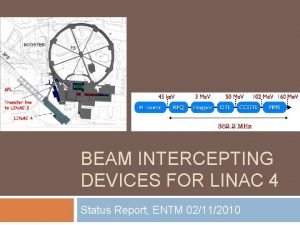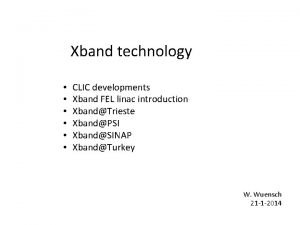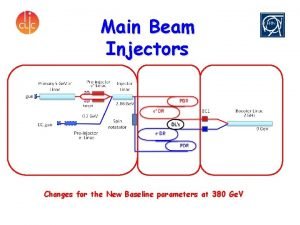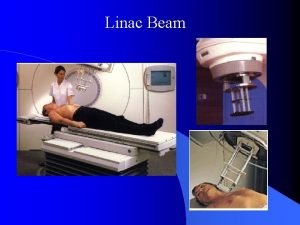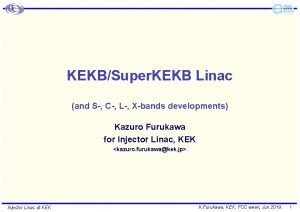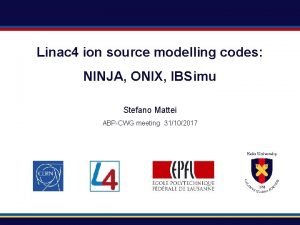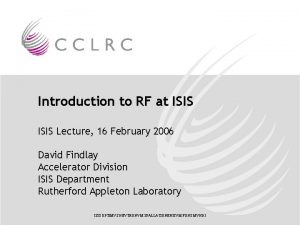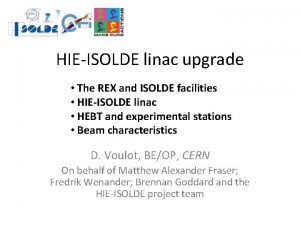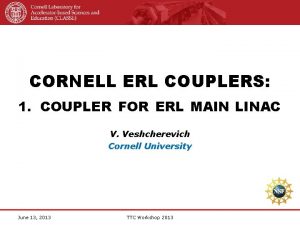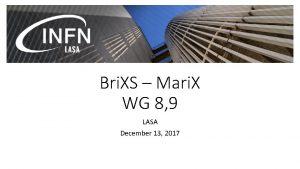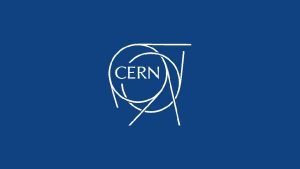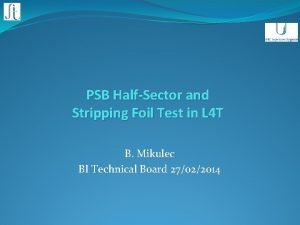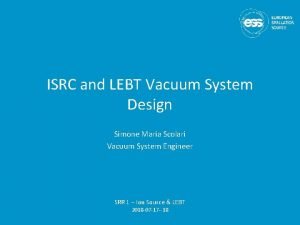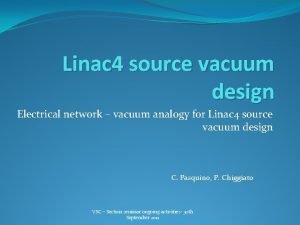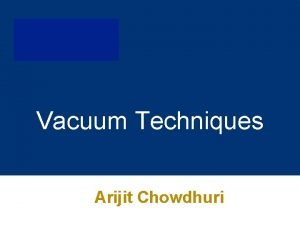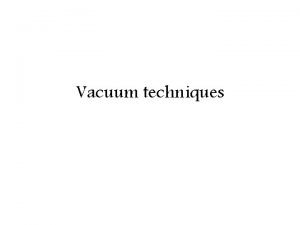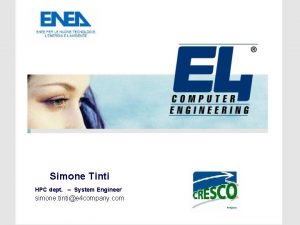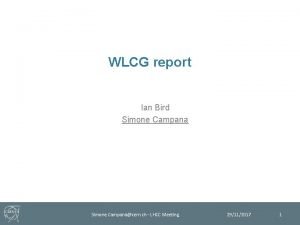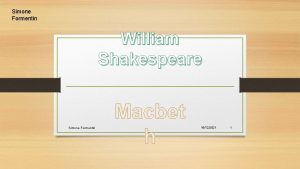WARM LINAC VACUUM SYSTEM Simone Maria Scolari Vacuum












- Slides: 12

WARM LINAC VACUUM SYSTEM Simone Maria Scolari Vacuum System Engineer Vacuum System Section – STS/AD www. europeanspallationsource. se

Outline • Warm Linac general overview • LEBT vacuum system: interfaces and status • RFQ vacuum system: interfaces and status • MEBT vacuum system: interfaces and status • DTL vacuum system: interfaces and status • Conclusion 2

Warm LINAC overview LEBT: - Designed at INFN Catania - ESS responsible for vacuum system design RFQ: - Designed at CEA - ESS responsible for vacuum system design MEBT: - Designed at ESS Bilbao - ESS reviews vacuum system design DTL: -Designed at INFN Legnaro - ESS responsible for vacuum system design 3

LEBT vacuum system: overview and interfaces Vacuum components: • Rough Vacuum manifold (2 primary pumps) • Two sets of two turbomolecular pumps • Two gas injection points • Two sets of gauges • RGA IS and LEBT Vacuum Schematics Interfaces: • Downstream interface with RFQ (gate valve before collimator) 4

LEBT status: vacuum open points Different configuration of the LEBT end part in Catania and in the tunnel. Two options for BI-box and the valve connection: - Welding of a new flange in the tunnel - Customized adapter • Catania configuration • Tunnel configuration H 2 injection requested to be raised to 10 sccm (from 5 sccm). Impact on pressure at RFQ to be evaluated. 5

RFQ vacuum system: overview and interfaces Vacuum components • • Rough vacuum system Turbomolecular pumps Gauges RGA LEBT Section 1 Outgassing and pumps: • • • OGR: 5 E-10 mbar l/s/cm 2 Gas: 50% H 2 and 50% N 2 Pumping speed: 345 l/s (H 2) ; 340 l/s (N 2) Interfaces: • • Upstream: LEBT collimator Gas in: 2 E-05 mbar l/s Downstream: MEBT Gate valve on RFQ • Implementation gate valves on TMPs ports TBD. Failed pumps Section 2 Section 3 Section 4 Section 5 MEBT

RFQ status: vacuum open points • TUNERS: Definition on He leak check procedure on the brazing connections (lessons learned from SNS and SLAC). Air Water inlet Vacuum ESS requirements (ESS VHB): - Hydrostatic test (x 1. 5 maximum design pressure) - Baking to remove water from possible cracks, - Leak check Brazing • ACCT brake at RFQ exit plate. - ESS proposal of a flat gasket accepted ACCT - Test to evaluate the required closing force to be executed envisaged at ESS 7

MEBT Vacuum System: overview and interfaces ESS ERIC provides testing capabilities for outgassing. • Test performed: - Black coating - Graphite - EMU grid - EPDM ESS Bilbao responsible for vacuum design and Mol. Flow simulations. Vacuum components: • • • Pump-down system NEG pumps Gauges MEBT-DTL interface Interfaces: • • Upstream: RFQ (valve sits on RFQ Downstream: DTL (valve sits on DTL and it’s an insertable valve) 8

MEBT status: vacuum open points • Outgassing test campaign to be concluded: - Braided cables with connectors used in the chopper box shall be tested • EPDM gasket for ACCT brake on the dump box: Circular/flat gasket Circular section gasket Flat gasket ESS Bilbao courtesy 9

DTL Vacuum System: Overview and interfaces Vacuum components per tank: • • • Pump-down system (carts) NEG pumps (both in the tank and the inter-tank) Gauges Outgassing tests and Molflow simulations carried out at ESS. Critical tested components: PMQs and ACCT PMQ ACCT Interfaces: • • Upstream: MEBT (insertable gate valve on DTL) Downstream: LEDP (All metal gate valve on DTL intertank) Due to high gas load of epoxy insulation, a bake of each ACCT is envisaged. 10

DTL status: vacuum open points • ACCT cleaning and bake-out procedure before installation. • Black coating for NPM in the DTL inter-tanks: two different solutions depending on installation schedule of Faraday cup. Before FC installation • Leak check procedure for the water cooled stems. After FC installation 11

Conclusions • Vacuum system design has been carried out with a strong collaboration with in-kind partners. • All polymeric materials have been tested for outgassing before approval. • The pressure requirements are fulfilled in all the warm LINAC sections. • Some integration issues still exist but they are not critical. 12
